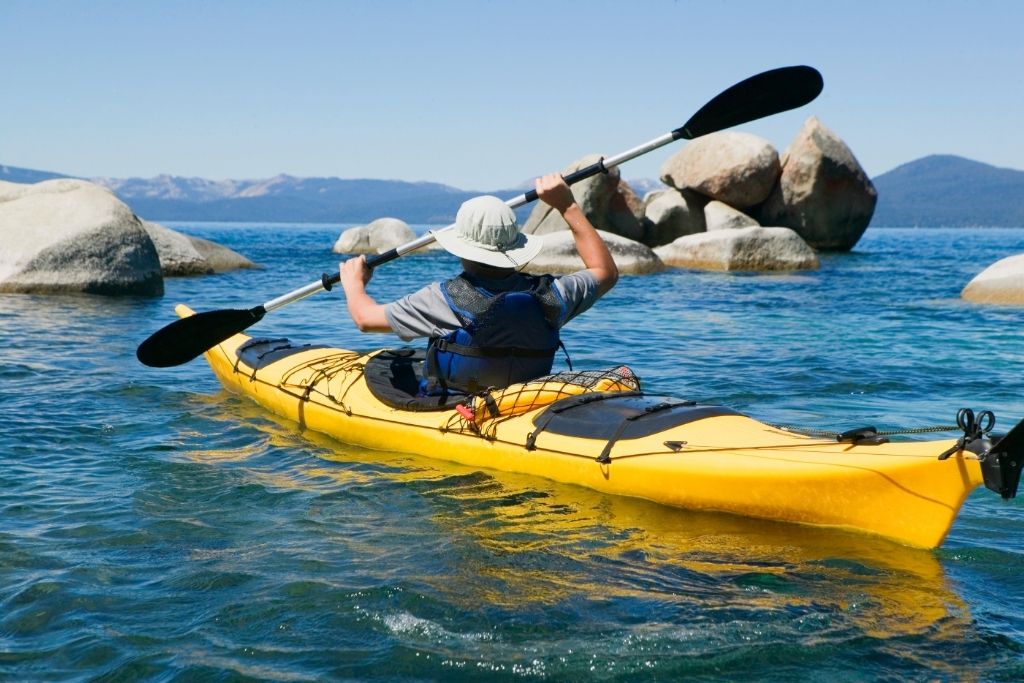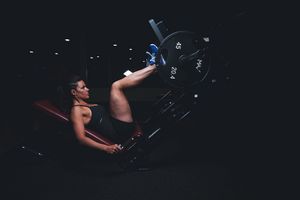Have you been considering taking up the hobby of kayaking, but aren’t sure of what type to invest in?
It’s understandable that buying a kayak can be confusing when you're new to the sport.
With so many different kinds on the market, how do you choose which type is best for you?
I know, the more options there are of anything, the more overwhelmed you feel.
This leads to an analysis of paralysis, and a confused mind usually doesn’t make any choices.
You don’t want to not get into the world of kayaking over not being able to decide what type to purchase.
Fortunately for you, I will give you a quick rundown of the most common types of kayaks to at least get you closer to making an informed decision.
This short beginner’s guide to choosing a kayak will help you to make that determination.
Let’s dive right in…
Recreational Kayaks
This is the kind of ‘yak most people think of when they hear the word "kayak".
Recreational kayaks are best for calm bodies of water, and you couldn't ask for a better boat for that relaxing float down the river.
Recreational kayaks are not difficult to maneuver, but they are more difficult to steer than a longer boat.
Most recreational kayaks are in the ballpark of 10 feet and 40 to 50 pounds, making them easy-to-transport, relatively lightweight yak.
If you're a beginner who is just starting out, or only need your boat for lazy rivers, a recreational sit-in kayak may be right for you.
Sit On Top Kayaks
Sit-on-top kayaks are another type of recreational kayak.
They come with many of the same advantages and disadvantages, and like their sit-in counterpart, they are best suited toward calmer bodies of water.
They also have the added drawback of being easier to tip over.
Alternatively, they also tend to be a favorite of fishermen, because of the added space on top of the kayak.
These types of kayaks are a good option for anyone who is looking for a little extra room.
Sea Kayaks
Sea kayaks are a little bit longer traditionally, meaning they are easier to steer. The added length helps you maintain your destination, even in windy or choppy water conditions.
They are ideal for racing because their length adds to their speed and stability.
These fast kayaks are designed for large bodies of water, such as the ocean or a large lake.
It's a good idea to master the technique of rolling and wet exits prior to setting foot in a sea kayak.
A little bit of learning beforehand will help keep you safe on the water.
Besides having fun, safety is your number one priority while out on the water.
Touring Kayaks
A touring kayak is like a cross between a sea kayak and a recreational kayak.
They tend to be longer and narrower than their recreational peers, but not quite as long as a sea kayak.
These are better suited for someone who already has some experience with a traditional recreational kayak, and is looking for a smoother ride.
Inflatable Kayaks
Inflatable kayaks can come in recreational, sea, touring, or even hybrid models. These kayaks start out without any air in them.
They are usually inflated through the use of a foot or hand pump, usually, and set up can take as little as five minutes.
Inflatable kayaks are made of surprisingly durable material, so the odds of puncturing the hull are slim.
If a hole is ripped, most inflatable yaks are multi-chambered. One hole won't bring down your ship, and that’s a good thing!
These kayaks are an option for anyone who needs a truly lightweight watercraft that can fit inside most car trunks.
They generally fall in the 25-35 pound range, and once deflated they are easy to transport.
Whitewater Kayaks
For the adventurers out there, whitewater kayaks are also available.
These ‘yaks come in lengths of six to eight feet and are generally used for finding one spot of rapids and playing in that area, versus traversing an entire river.
Whitewater kayaks may be used by beginners, but it's wise to have a firm understanding of how to do a wet exit prior to getting in the boat.
Obviously kayaking on whitewater is a lot more challenging and dangerous for people who are inexperienced.
I recommend that you graduate up to whitewater kayaking after mastering traversing on calm bodies of water, such as lakes and even ponds.
Safety first, no matter what!
Conclusion
Yes, it’s true that choosing the right type of kayak for yourself can be a daunting task, just as it can be when choosing any other product.
Consider what your goals are and your skill level before deciding on a watercraft.
I’ve provided you with a general overview of each of the main types of kayaks to give you more clarity.
Of course, you should do more research on the various kinds and brands available in the marketplace.
You’re off to a good start, especially if you knew nothing about kayaks before reading this article, but like with any sporting equipment, there’s always a lot more to learn.
Take your time choosing a kayak, and do as much research as you need.
If you’ve already made your mind up, then go for it!
I’ve mentioned this multiple times already…
Put safety first, because you don’t want your time on the water to go from fun and adventurous to a tragedy.
Kayaking isn't only fun but also provides you with many health benefits such as improving your cardiovascular system, muscle toning, etc...
If you're interested in this relaxing sport, then just do it!
Have fun choosing a kayak!
Download Our Free E-book!







